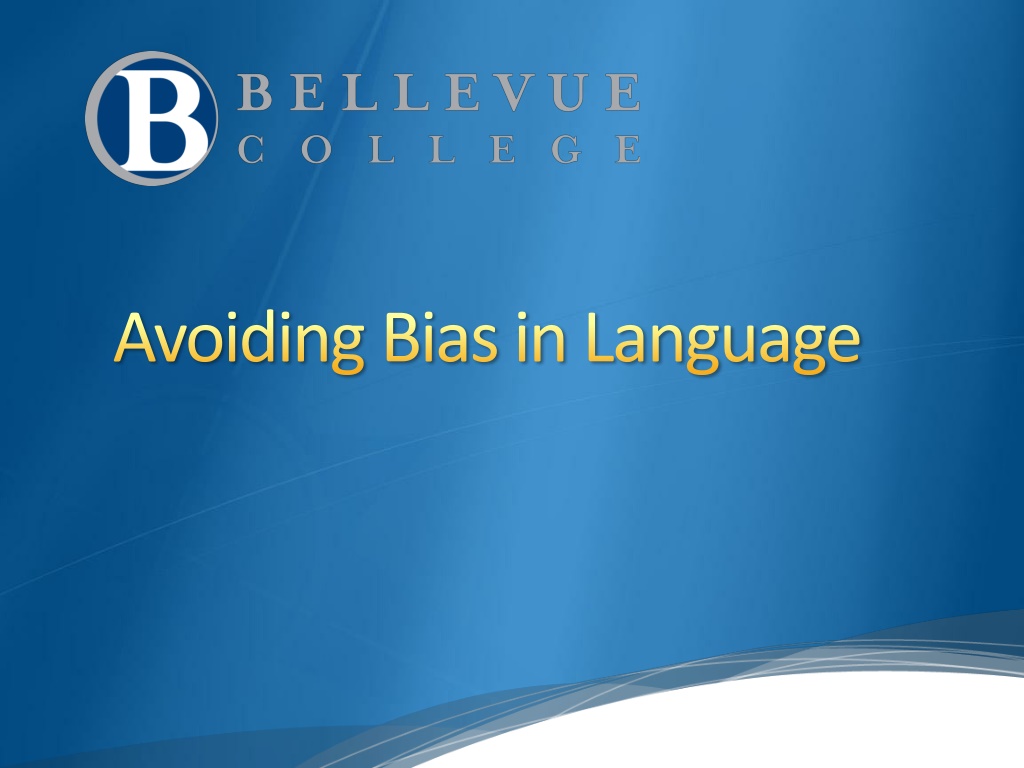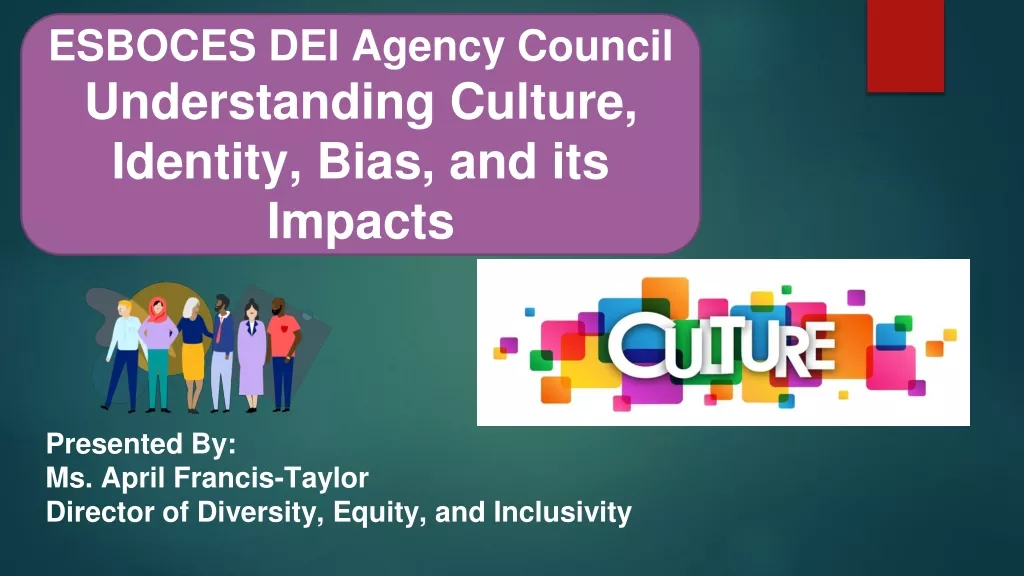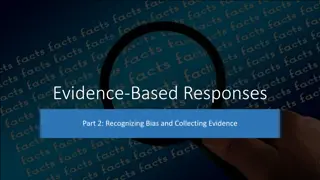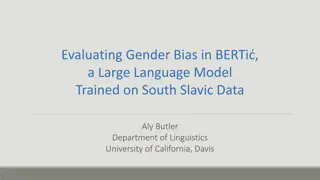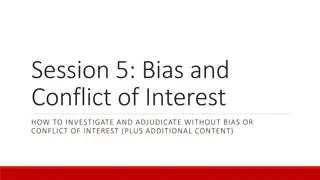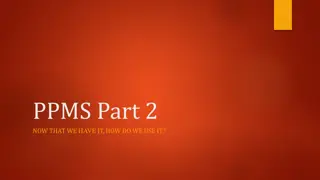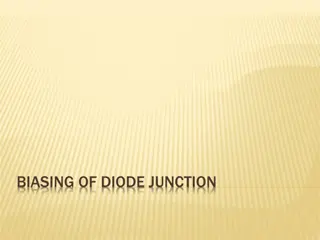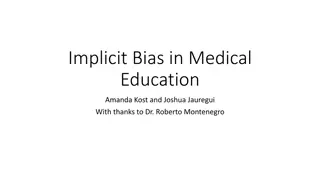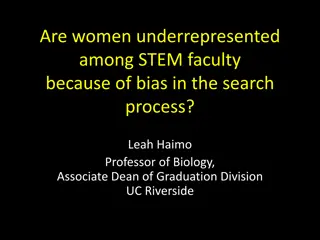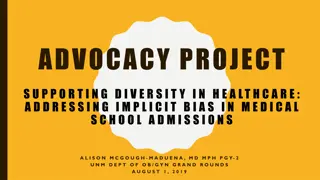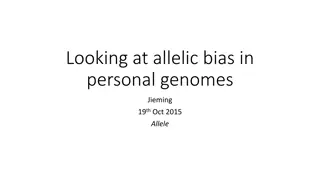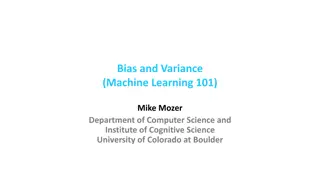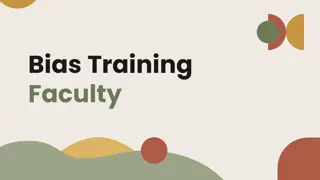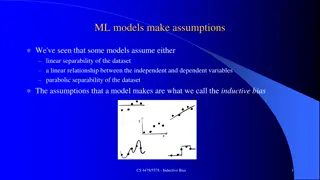Understanding and Avoiding Bias in Language
This tutorial aims to help you grasp the concept of biased language, understand the importance of avoiding it in your work, and learn how to identify and eliminate biased language from your writing. It covers the definition of bias in language, examples of biased language, and why it is crucial to strive for neutrality in academic writing.
Download Presentation

Please find below an Image/Link to download the presentation.
The content on the website is provided AS IS for your information and personal use only. It may not be sold, licensed, or shared on other websites without obtaining consent from the author. Download presentation by click this link. If you encounter any issues during the download, it is possible that the publisher has removed the file from their server.
E N D
Presentation Transcript
Goal The goal of this tutorial is to make sure you understand meaning of biased language Understand why you should avoid using biased language in your work Know how to avoid it 2
Objectives By the end of this tutorial you should be able to Identify biased language in your writing Articulate why biased language should be avoided Be able to edit your own writing so that you avoid biased language 3
What is Bias in Language The word bias refers to something that is uneven or unbalanced This word is sometimes used to refer to samples as in, if a sample is biased, it does not represent the population Bias in language refers to language that is uneven or unbalanced or not a fair representation Academic writing requires writers not to use biased language 4
Bias in Language Bias in language can be obvious Words that are obviously prejudiced Offensive or colloquial words referring to specific groups of people It can also be difficult to detect Writing can contain hidden messages about the superiority or inferiority of various groups or types of people 5
Example of Bias in Language Any ethnic, racial or sexual slang E.g. redneck rather than white laborer E.g. chick rather than woman Terms that were once used but are now outdated E.g. colored instead of Black or African American E.g. idiot instead of learning disabled The word idiot was used long ago to formally refer to people with cognitive disabilities Now it is used to deliberately insult someone s intelligence This is a good example of how dramatically terms can change 6
Examples of Bias in Language Colloquial terms E.g. street person instead of homeless person Terms with unnecessary or subtle negative meaning E.g. vagrant instead of homeless person Vagrancy is word that refers to a legal violation It is not a violation of the law to be without a home 7
Why We Try to Avoid Bias in Language The main purpose of academic writing is to search for a truth based on objective evidence. We must exercise a constant vigilance against confusing objective evidence with personal opinion. 8
Why We Try to Avoid Bias in Language Academic requires objective evidence which often involves incidence, quantification, and interpretation. "Incidence" means that something has happened. "Quantification" means that something has been measured in numbers. "Interpretation" means finding a reason. For example, if I drop a ball and a feather, the ball will fall faster than the feather. If, however, I drop both of them in a vacuum, they will reach the earth at the same time. My interpretation is that the resistance of air makes the feather fall more slowly. 9
Why We Try to Avoid Bias in Language I can then form a hypothesis: all objects fall at the same rate. I perform my experiment many times, with many different objects, and the result is always the same. With this additional evidence, my hypothesis becomes a thesis-that all objects fall at the same speed-we might want to add "in a vacuum. That is the heart of academic writing: a hypothesis is stated and supported by evidence that can be measured and that is not simply personal opinion. In our example, personal opinion was wrong in suggesting that a ball always falls faster than a feather. 10
Why We Try to Avoid Bias in Language People we write about may have various concerns. Etc. They may be considered outside the norm in some aspect We need to be sure that our language does not imply that they are outside the norm in terms of their rights, potential and privileges as human beings 11
How to avoid bias in language This can be hard because what is considered biased changes over time Terms that were once acceptable are not acceptable now Groups change over time regarding the words they are comfortable with It is our responsibility keep up with these changes Asking our friends and colleagues is a start, but not a certain solution for avoiding bias Using common media and cultural terms will not be a certain solution for avoiding bias 12
Guidelines for avoiding Bias The APA style manual (2011) has three general guidelines for avoiding bias (1) Describe at appropriate level of specificity (2) Be sensitive to labels (3) Acknowledge participation These guidelines are a start Following them will help you avoid bias But not guarantee it 13
Guideline 1-Describe at Appropriate Level of Specificity The goal is to make sure participants are fully and fairly described In terms of race and ethnicity In terms of sex and sexual orientation In terms of age In terms of any relevant conditions or illnesses they may have Characteristics that are not relevant should not be described So you need to think about what is actually relevant 14
Guideline 1-Example Here is a bad example: Participants included poor elderly non-whites Here is a better example: Participants included Hispanic Americans over the age of 65, who had incomes below the federal poverty level. 15
Guideline 1-Notes on the Example The bad example is too general The bad example uses inexact terms that don t clearly describe the sample and have negative meanings The better example is more specific The better example uses objective descriptions such as below the poverty line, and gives details about age and race The better example could be improved by giving more detail about the ethnicity of the sample, if they are, for instance, of specific Hispanic ethnicities. This information would also be relevant to include if it is available. 16
Guideline 2-Be Sensitive to Labels People may be grouped by labels, such as racial or ethnic categories, symptom levels or diagnostic categories. It is important to use labels fairly So that one group does not seem better than another It is important to use labels that are the accepted usage by the members of that group 17
Guideline 2-Example A bad example Researchers collected data from mentally ill urban youth. A better example Researchers collected data from adolescents aged 13 to 18 who lived in metropolitan areas and met criteria for schizophrenia or depression. 18
Guideline 2-Notes on the Example The bad example is, again, too general It uses terms that are inexact and also may have subtle negative meanings, like urban and mentally ill The better example is more precise It describes clearly who the people are and uses accepted diagnostic and demographic terms 19
Guideline 3: Acknowledge Participation Academics conduct research with other people It is important to use terms that show that those people are active, living participants in our studies It highlights our responsibility as researchers It highlights the importance of participants collaborative efforts in moving science forward 20
Acknowledge Participation-Example A bad example Subjects had to submit a blood sample, and then were interviewed A better example Participants voluntarily provided a blood sample collected by a lab technician, and then a research assistant interviewed each participant 21
Guideline 3-Notes on the example The bad example sounds as if the people in the study had no control or choice over their own behavior they had to submit a sample, they were interviewed. The bad example makes no reference to the researcher s role, as if the researcher is an invisible, all powerful presence The good example shows that the people in the study are in charge of their own behavior they provide the sample The good example shows that the researcher and the participant actively work together on the research the research assistant interviews the participants 22
Bias in language-Summary Bias in language can be hard to avoid 3 guidelines to keep in mind are Be appropriately specific Use labels that are acceptable to groups described Acknowledge participation Following these guidelines will help you avoid bias But they are not a guarantee 23
Bias in Language-Activity Read the two captions and re-write the Associated Press piece. 24
